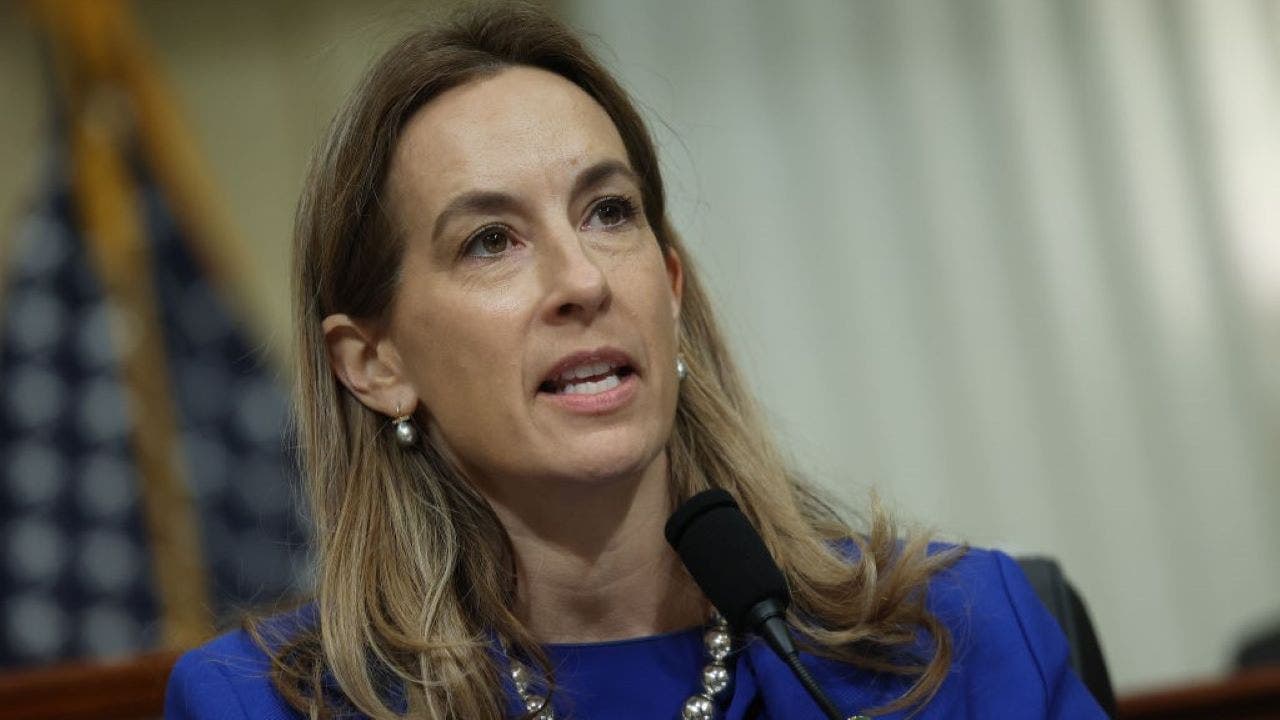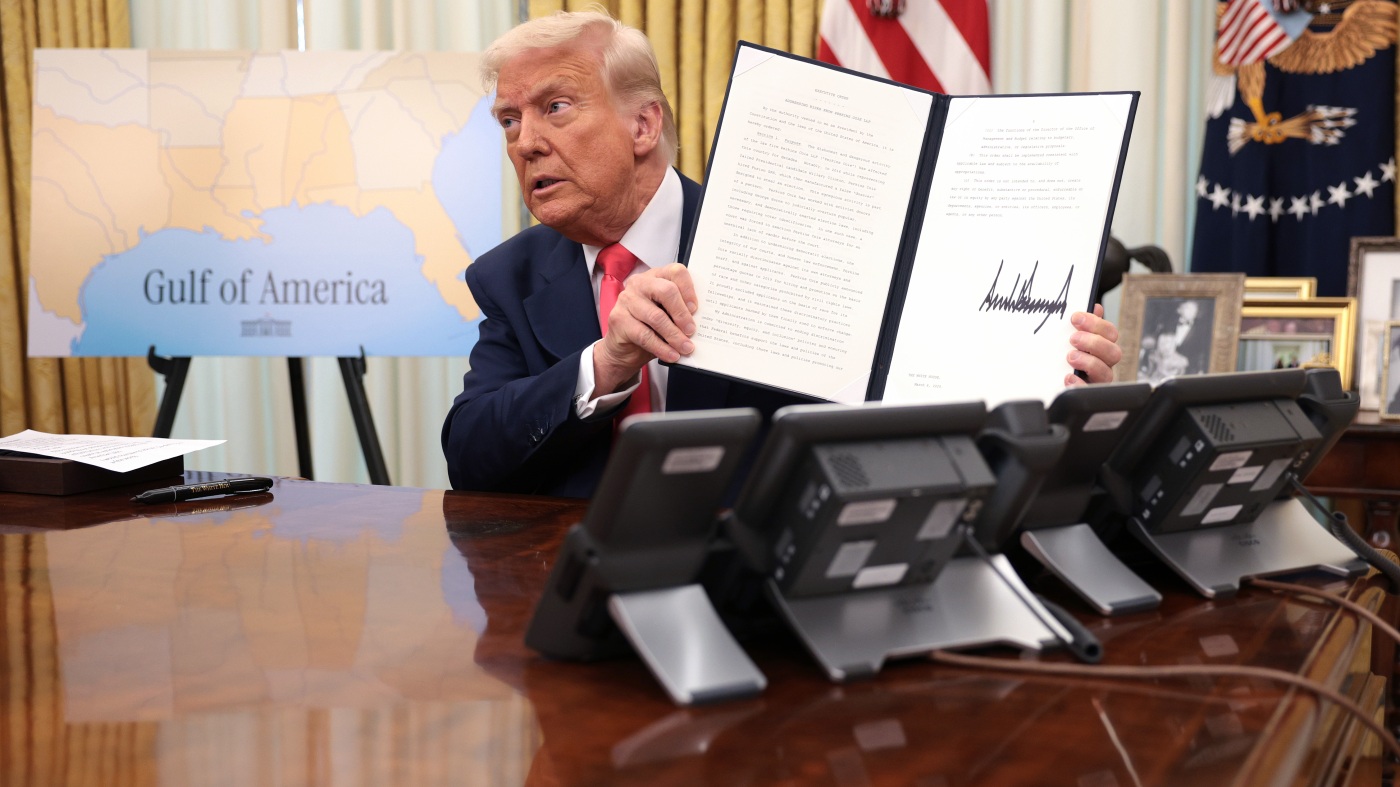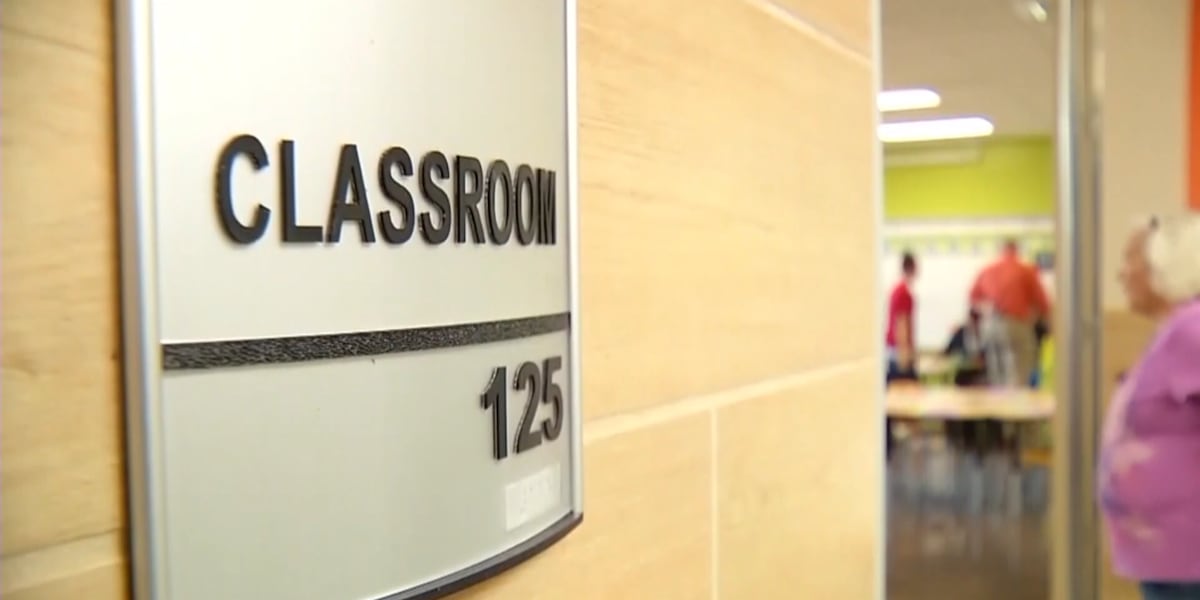New York
Has New York City Reached Peak Lanternfly?

There are many ways to kill a spotted lanternfly.
One is the classic stomp: raising a foot high before hammering it into the sidewalk and hopefully flattening one of the distinctive bugs. Then there are the more standard insect-squishing techniques, such as the rolled-up magazine swat, the hand smack, the paper towel splat. Another is the shoe-swinging method, in which New Yorkers sacrificially tread barefoot on city streets so as to use their footwear as killing instruments.
The actor Kieran Culkin, known for his role as Roman Roy in “Succession,” was observed employing this tactic in Brooklyn last month, using one shoe to destroy, by his audible count, at least 70 lanternflies. One bystander declared him “a true N.Y.C. hero.”
People across all five boroughs have dutifully followed the city’s directive to kill the invasive insects on sight. But is it working?
So far this year, the bugs have been documented riding the subway, littering streets and even infiltrating apartments, evidence of a trend that experts anticipated: New York City’s lanternfly problem is getting worse.
While the grass-roots effort is not likely to significantly curb the lanternfly population, experts said, it can help raise public awareness of the problem while scientists seek a lasting solution. In short: Keep stomping.
Spotted lanternflies, native to Asia, were first identified in the United States in Pennsylvania in 2014. They have swarmed New York City every summer since 2020 and have become a nuisance across the Northeast, Mid-Atlantic and parts of the Midwest. While they pose no risk to humans, lanternflies can damage agricultural crops, particularly grapevines.
It’s difficult to estimate the number of spotted lanternflies in New York, because the city is not keeping an official tally of sightings or killings, said Chris Logue, who oversees plant industry at the New York State Department of Agriculture and Markets. But Mr. Logue said that lanternflies tend to be more noticeable toward the end of the summer because of their natural life cycle: Almost all the lanternflies that have hatched this year are now adults. Also, more of the insects are at eye level because they climb buildings, possibly looking for wind currents to ride, he said.
Brian Eshenaur, an entomologist at Cornell University, agreed that the population of lanternflies in New York City is much higher than it was last year.
“This is typical when the spotted lanternfly moves into a new location,” Mr. Eshenaur said. “The first couple of years, the populations build up, and then around year three they level off, and then often there is a drop in the population in future years.”
At first, officials urged members of the public to scrape lanternfly eggs — which can look like bark — off trees, Mr. Logue said. But that was far more labor intensive than simply squishing the bugs underfoot, so the city switched tactics.
Each female spotted lanternfly lays 30 to 60 eggs, Mr. Logue said, so the hope is that when people kill the lanternflies they come across, they can help mitigate the population growth.
But New Yorkers can only stomp so many invaders.
And Daniel Gilrein, another entomologist at Cornell, described the effect of New Yorkers’ lanternfly killing as “marginal,” saying there was little proof that isolated stomping was “having a desired significant impact on the lanternfly population.” But he noted that the communal effort “helps engage the public” and leads people to feel “somewhat empowered.”
The good news, Mr. Gilrein said, is that the city is currently contending with all the lanternflies it will see this year — only one generation hatches annually. The adults, recognizable by their two sets of wings — one pale gray with black spots, the other bright red — will stay active into October, laying eggs. Then the first hard freeze of winter will kill off all the adults, while the eggs will survive and new lanternflies will hatch next year.
“I expect lanternflies will be spreading into more areas and neighborhoods, establishing new populations that more will notice next summer,” Mr. Gilrein said.
Despite public perception, experts said the lanternflies were not becoming increasingly emboldened or skilled at dodging attempts to kill them. (Mr. Eshenaur said attacking the bugs head-on tends to be more effective than sneaking up from behind, since lanternflies usually launch forward when threatened.)
And while the increase in lanternflies has led to an increase in irritation, New York has so far been spared the agricultural damage that Pennsylvania experienced. Vintners in the Finger Lakes region and on Long Island have been on high alert since lanternflies attacked grapevines in Pennsylvania and reduced their yield, but said the bugs had not yet adversely affected New York’s wine industry.
“I think we have slowed the spread some,” Mr. Eshenaur said. “All of that time that we gained from a slower spread allows more research to take place, and there’s a lot that is happening now.”
According to Kareem Massoud, a winemaker at Paumanok Vineyards on Long Island, there have been reports of lanternflies outside the city, but the insects have yet to infiltrate the eastern portion of Suffolk County. Mr. Massoud said he was aware that the infestation could worsen, and likened it to witnessing “a slow motion train wreck.”
“You see it coming years in advance and, unfortunately, there’s not much we can do,” Mr. Massoud said.
Mr. Massoud said he was in close contact with experts at Cornell and Penn State, where the majority of the country’s lanternfly research is taking place. He has discussed the issue with growers in Pennsylvania, who told him that while lanternfly infestations are bad, they can be managed. Preventive measures include laying a fine mesh over the vines and spraying insecticides, both of which are seen as last resorts because they can also damage the crops themselves. Mr. Massoud also said he appreciated the actions of those who are killing as many lanternflies as they can.
“This is very much the sort of thing where we can enlist the public’s help,” Mr. Massoud said. “Kill it, squash it, capture it, report it.”
The U.S. Department of Agriculture is monitoring ports in an effort to limit the spread of lanternflies to other states or countries. People are also urged to check their cars, luggage and clothing when driving out of the city, Mr. Logue said, adding that lanternflies are “very, very good hitchhikers.”
Experts in Pennsylvania and New York are experimenting with larger-scale solutions, Mr. Logue said.
In higher-risk areas, officials have used special vacuums to suck up lanternflies. In the Bronx, which is experiencing a serious infestation, the New York Botanical Garden has removed plants that the insects are attracted to, said Vincent Galatolo, the garden’s director of plant health.
The Bronx Zoo hung triangular mesh traps engineered to catch lanternflies, said Sean Tarantino, the zoo’s horticulture supervisor. None of the zoo’s animals are interested in eating the invaders, Mr. Tarantino said. But entomologists in the Northeast are exploring introducing insects that naturally prey on lanternflies, although such a measure is years away from implementation, according to Mr. Logue. As time goes on, Mr. Eshenaur added, certain birds and predatory insects such as preying mantises and spiders are likely to figure out that spotted lanternflies can be a food source. Their developing palates could help keep the population in check, he said, but won’t eliminate the bugs.
Still, Mr. Logue said, New York needs its residents to continue the cull. Much is still unknown about the lanternflies and how best to get rid of them, so every action counts.
“Keep doing what you’re doing,” Mr. Logue said. “It’s a new surprise every day with the spotted lanternfly.”

New York
Can These Six Artists Predict the Fate of the Art Market?

The spring sales of modern and contemporary art often arrive in May with a steady drumroll of paintings whose estimates soar above $50 million — a sign of confidence in the industry’s roster of ultrawealthy collectors who trade them like financial assets.
Now that drumroll sounds like rain’s pitter-patter as the world’s leading auctioneers recalibrate for an art market rocked by economic uncertainty over the last three years and contend with new challenges, like tariffs.
Of the hundreds of artworks for sale this season (including pieces by Picasso, Basquiat, Magritte and Matisse) there are only a couple above the $50 million threshold: a 1955 Giacometti bust estimated in excess of $70 million, and a potentially record-setting work by Mondrian valued at about $50 million.
But without the spectacle of dinosaurs, bananas and cryptocurrencies in their big-name evening sales, the major auction houses are headed back to basics. It is a season of conventional offerings with very few headline-grabbing estates or deals at a time when these companies are suffering from layoffs; seeking outside investments; and weathering a 20 percent decline in sales within the industry’s broader downturn that has seen global sales fall to $57.5 billion.
“The upper reaches of the market over $5 million are very quiet right now,” said Jacob King, an art adviser in New York. “Material you would have seen in the day sale is now in the evening sale.”
Despite those challenges, the auction houses are still betting on themselves to raise mountains of money within a single week at Christie’s, Sotheby’s and Phillips in New York. Their combined estimate is $1.2 billion to $1.6 billion.
“Last season was a tough one because we had to put together the sales brick by brick,” Lisa Dennison, a top executive at Sotheby’s, said of the November auctions. “Going into the May sales, we did feel the pipeline flowing a bit more.”
Drew Watson, head of art services at Bank of America Private Bank, pointed out that some of the largest consignments of the season were announced in April, after President Trump’s tariffs went into effect — giving some reason for optimism. “You would expect that if people were really bearish about the art market right now that a lot of those high-end lots would not be coming to the market,” he said.
But the market remains soft, and new ultrawealthy collectors scarce, increasing the pressure on auction houses to perform. Here are six bellwether artworks in the evening sales that may indicate the health of the art market.
Alberto Giacometti
“Grande tête mince (Grande tête de Diego)” (1955), in excess of $70 million, Sotheby’s Modern Evening Auction, Tuesday
Giacometti was toward the end of his career when he created this bronze bust of his brother Diego, the artist’s studio assistant and muse. The sculpture has the highest estimate in New York’s spring sales and comes without a minimum financial guarantee from either Sotheby’s or a third party to ensure the artwork sells, as is typical with expensive lots. The seller, the Soloviev Foundation, a nonprofit founded by the real estate tycoon Sheldon Solow, stands to receive a bigger payout if the work sells for its estimate.
Solow, who died in 2020, acquired the work in 1980 from the Maeght family, which established the first private art foundation in France, the Fondation Maeght. The foundation is offloading the bust to support its philanthropies, which include the Metropolitan Museum of Art and Henry Street Settlement, according to its website.
“This one has always been the mother lode,” Simon Shaw, a Sotheby’s executive who helped arrange the sale, said of the Giacometti, which was cast during the artist’s lifetime. He described it as a “great sculpture in the season where it would be the most exciting thing available by some significant margin.”
Another cast of the artwork sold at Christie’s in 2010 for $53.3 million; adjusted for inflation, the price today would be $78.1 million, suggesting the artwork has appreciated very little in the last 15 years. Experts said the one being offered at Sotheby’s could sell for more because it is the only painted cast in the series.
Piet Mondrian
“Composition With Large Red Plane, Bluish Gray, Yellow, Black and Blue” (1922), about $50 million, Christie’s, Leonard & Louise Riggio: Collected Works, Monday
When the Barnes & Noble founder Leonard Riggio died last year, he and his widow, Louise, had acquired an immense art collection, championing blue-chip minimalist art and donating to nonprofits like the Dia Foundation, as well as modern paintings by masters like Pablo Picasso, Rene Magritte and Fernand Léger that hung in their Park Avenue apartment.
Louise decided to sell the apartment and consign nearly 40 artworks to Christie’s, including a Mondrian painting that will be the auction house’s most expensive artwork this season, with an estimate around $50 million.
Mondrian is considered a pioneer of European abstraction, thanks to his early experiments in color and geometry in the 1920s. These days, the financial value of his paintings is tied to the proportion of red covering the canvas, making the Riggio example a potential record-breaker. (A previous benchmark was set in 2022 at Sotheby’s, when a similar artwork sold to an anonymous buyer for $51 million.)
But that Mondrian was sold during the market’s height, leading industry analysts to debate whether the prestige of the Riggio name can overcome the economic uncertainty at play today. The auction house has also taken a large risk in providing a guarantee for all artworks, meaning that Christie’s will need to buy in whatever fails to sell.
“They did a big house guarantee and are having trouble selling it off,” said King, the art adviser. “It’s good material, but these are big estimates and there is a lot of stuff to sell.”
Olga de Amaral
“Imagen perdida 27 (Lost Image 27)” (1996), $300,000 to $500,000, Phillips Modern and Contemporary Art evening auction, Tuesday
A tapestry by the 93-year-old Colombian artist Olga de Amaral marks her first appearance in a major New York evening auction — the latest symbol that yet another under-known female artist has moved from the fringes of the marketplace to its upper echelon.
“She’s really a rediscovery, and finally coming out of the pigeonhole,” said Jean-Paul Engelen, a Phillips executive. “She’s no longer a craft artist or a Latin artist. She’s just an artist.”
Many of the other female artists featured this season are either bona fide auction stars whose work reliably sells for millions of dollars (like Agnes Martin, Georgia O’Keeffe and Cecily Brown), or rising talents with low estimates of $100,000 or less (like Danielle Mckinney, Emma McIntyre and Ilana Savdie). De Amaral stands somewhere between them, as an established artist whose value is still climbing after the opening of her first major European museum survey at the Fondation Cartier in Paris last October.
The seller of the tapestry bought the artwork directly from de Amaral in 1996. The artist has woven grids of linen covered in gold leaf to create shimmering abstractions. Three more of her artworks are in New York’s crowded day sales, including the 2006 tapestry “Imagen Paisaje I (Landscape Image I),” which has a high estimate of $1.5 million at Sotheby’s.
That Phillips has chosen a lower-priced work for its evening sales is a sign that the auction house struggled this season to pull significant consignments from sellers, according to experts. The company’s total estimate for the evening sales is far below its competitors and its top lot — a 1984 Basquiat painting with a high estimate of $6.5 million — is almost 90 percent less than the top lot offered in last year’s equivalent sale.
“In this market, what we have, we feel we can sell well,” Engelen said.
Jean-Michel Basquiat
“Baby Boom” (1982), $20 to $30 million, Christie’s 21st Century evening auction, Wednesday
Andy Warhol
“Big Electric Chair” (1967-68), about $30 million, Christie’s 20th Century evening auction, Monday
In 1985, posters promoting a show of collaborative paintings by Andy Warhol and Jean-Michel Basquiat featured the artists posing in boxing gear, as if squaring off instead of teaming up. Four decades later, Basquiat has knocked out all competitors — including the former champion Warhol — to become a bellwether in the art market, according to Christie’s global president Alex Rotter.
“If you asked me to name one artist, it’s Basquiat,” Rotter said. “Over the past five years, he has the broadest attraction to people at different price levels.”
After a prolonged buying frenzy for Warhol paintings, most prime examples now reside in museums and private collections that are reluctant to sell. His absence in the market allowed Basquiat to become a standard-bearer because his paintings and drawings still frequently circulate.
The appearance of Warhol’s “Big Electric Chair” will test if the ultrawealthy’s appetite for the artist has shifted. It is the lone Warhol piece estimated to sell for more than $10 million this season and shows Warhol’s fascination with America’s dark underbelly. “Big Electric Chair” was featured in the artist’s first European and U.S. museum surveys. In 2019, a multicolored version of the piece sold at a Christie’s auction just above its low estimate at $19 million.
The screen print is also competing in the same price range as Basquiat’s “Baby Boom” painting — one of the artist’s most accessible works from 1982, widely considered the best year of his career. The painting is an art historical sendup of religious iconography, reinterpreting the holy family of Jesus, Mary and Joseph as the artist and his parents.
Rotter said the Basquiat painting showed the evolution of the artist’s style. “It’s ’81 where the radical Basquiat comes out. It’s ’82 where he has confidence with the radicality.”
Carroll Dunham
“Bathers Seventeen (Black Hole)” (2011-12), $250,000 to $350,000, Collection of Barbara Gladstone, Sotheby’s, Thursday
Sotheby’s is holding dedicated auctions of artwork owned by two respected gallerists on the same night, a collection from the London gallerist Daniella Luxembourg with a high estimate of $41.1 million and a more modest group once held by Barbara Gladstone, with a high estimate of $17.2 million.
Gladstone, who died last year at 89, was a generational force in the art world responsible for boosting artists like Robert Rauschenberg, Keith Haring and Elizabeth Murray into the limelight. Her namesake gallery has continued after her death, with four remaining partners running six locations around the world.
There are only two artists in the dozen lots offered at Sotheby’s that are still represented by the gallery: Alighiero Boetti and Richard Prince.
Another artist, Carroll Dunham, disappeared from the gallery’s website only a few weeks ago. Gladstone had held more than a dozen exhibitions of Dunham’s artwork since 2004. (A spokesperson for Gladstone Gallery did not reply to requests for comment.)
That subtle change has brought some intrigue to the sale of his painting “Bathers Seventeen (Black Hole).” Although the work is estimated below his auction record of $591,000 in 2017 for “Integrated Painting Seven,” Gladstone’s personal ownership of “Bathers” could provide a boost.
“Works from her collection coming up for sale are iconic examples of each artist’s work, and each is a vital piece of contemporary art history,” said Molly Epstein, a senior partner at the advisory firm Goodman Taft. Gladstone choosing to live with these works “gives them even greater meaning,” Epstein added.
New York
Could Branding Herself as a ‘Mom Governor’ Help Hochul Win Re-election?

When Gov. Kathy Hochul first took office in 2021, she was a relative unknown. Few New Yorkers knew how to pronounce her name, let alone what Ms. Hochul, Andrew M. Cuomo’s seldom-seen lieutenant governor, stood for.
Since then, she has honed an executive style that is equal parts practical and protective. And while many elements inform her politics — her Buffalo roots, her Catholic faith, her business-friendly sensibility — perhaps none is more central than her role as a mother.
“Does anybody not know I’m a mom?” Ms. Hochul, a Democrat, joked at an appearance last week to celebrate her most attention-grabbing win in this year’s budget: a bell-to-bell ban on cellphones in schools. “I say it every single day: I’ve been a mom longer than I’ve been a governor.”
She built on this message in an op-ed published on Friday by Fox News, invoking her status as New York’s “first mom governor” to pledge her commitment to protecting children.
“We’re taking back our classrooms and giving kids their childhoods back,” she wrote.
The message, and her choice of a conservative news outlet to deliver it, was a striking example of how Ms. Hochul has embraced a kind of “family values” approach more in line with the Republican Party of the 1990s than with the Democratic Party of the 2020s.
Indeed, in crafting the cellphone regulations, the Hochul administration found itself following the lead of Republican-led states like Louisiana and Florida, rather than Democratic-led states like California, where regulation is more flexible. Last year, when the governor embarked on a push to restrict social media companies, New York found itself looking to Utah, where the push to restrict children’s media led to the banning of books by Margaret Atwood, Rupi Kaur and Judy Blume.
Ms. Hochul is expected to face a difficult re-election challenge next year, with potential candidates from both parties considering taking her on. They include Democrats like Representative Richie Torres and Ms. Hochul’s lieutenant governor, Antonio Delgado, and Republicans like Bruce Blakeman, the Nassau County executive, and Representative Mike Lawler.
Representative Elise Stefanik, a close ally of President Trump, has also expressed interest in running, and could be a particularly formidable adversary, pitting Ms. Hochul’s Democratic conservatism against the fractious energy of Mr. Trump’s MAGA movement.
Ms. Stefanik criticized Ms. Hochul’s $254 billion budget for not doing enough to address violent crime, calling it a “desperate attempt to shore up a politically weakened and toxic governor.”
Ms. Hochul also has detractors in her own party. Her tendency to align herself with business interests and law enforcement irks some Democrats, while some state lawmakers grumble about her “because I said so” negotiating style.
Facing middling poll numbers and a persistent perception of weakness, Ms. Hochul has sometimes sought a foil in Mr. Trump, issuing stern condemnations of his policies and his attempts to eliminate congestion pricing.
Against that backdrop, it is perhaps notable that Ms. Hochul has sought to humanize her image, asking for voters to see her as a mother. Her team insists that the maternal instinct underscores her vision of what a governor should be: someone who keeps New Yorkers safe, with a roof over their head; someone who makes sure that their children eat breakfast, and who keeps those children from texting in class.
In a state where more than a quarter of voters are not registered with either major party, Ms. Hochul knows she will most likely need to win support from people who may be turned off by politics but are open to hearing from a “mom governor.”
The instinct is written across Ms. Hochul’s legislative priorities, from affordability to public safety.
This year, she pushed to make it easier for the police to remove people having mental health episodes from public spaces, built on her efforts to make New York’s bail law stricter, and gave prosecutors more leeway in turning over evidence to defense lawyers.
Her protective instincts are also visible in her cautious approach to the state’s finances and investment in reserves, which have reached their highest level in years. (This year, she will tap into those savings, to pay off businesses roughly $7 billion in Covid-era unemployment insurance debt, amid fears of a recession.)
But her maternal worldview is perhaps most evident in Ms. Hochul’s use of the state budget to pass initiatives tied to children’s well being. She expanded the child tax credit to $1,000 for children under 4, and allocated enough money to offer free breakfast and lunch for students from kindergarten through high school.
Last year, the governor regulated the use of so-called addictive algorithms that target children, and created a privacy provision that prevented social media companies from collecting children’s personal data.
Ms. Hochul has framed her actions in broad, parent-friendly terms, saying it is a moral imperative to address the increase in mental illness and the degradation of attention.
Yet in one key matter, Ms. Hochul decided against using her influence to compel private schools to provide a basic education. Instead, she included budget language to weaken state oversight over private schools.
Ms. Hochul defended the move as necessary to preserve religious freedom in New York. The change was a priority of ultra-Orthodox and Hasidic legislators representing yeshivas, which collect millions of taxpayer dollars but do not always provide a basic secular education.
The change was panned by Ms. Hochul’s own education commissioner as well as many Democratic lawmakers, who called it a politically motivated betrayal of the state’s responsibility to children.
On the Senate floor, Senator Liz Krueger, a Manhattan Democrat, called the provision “antisemitic” in that it would deprive Jewish children of a basic education, adding that the change could lead to greater erosion in education.
“With this change in law, we’re actually saying here in New York, if you define yourself as a religious school and you aren’t meeting our most basic, sub-minimal standards for actual education, come on down,” Ms. Krueger said.
But in New York’s ultra-Orthodox communities, a potentially crucial demographic for Ms. Hochul come 2026, the move was celebrated as helping to secure “freedom of education.”
New York
3 Lawmakers Involved in Newark ICE Protest Could Be Arrested, DHS Says

A spokeswoman for the Department of Homeland Security suggested on Saturday that three Democratic members of Congress might face assault charges after a confrontation outside an immigration detention facility in Newark during the arrest of the city’s mayor, even as new details emerged that appeared to contradict the Trump administration’s account of the surrounding events.
The three lawmakers — Representatives Bonnie Watson Coleman, Rob Menendez and LaMonica McIver of New Jersey — were inside the facility on Friday for what they described as a congressional oversight visit, which they have the right to conduct under federal law. The facility, Delaney Hall, received its first detainees last week and is eventually expected to hold as many as 1,000 migrants at a time.
Soon after the legislators left the building on Friday afternoon, Newark’s mayor, Ras J. Baraka, was arrested by the head of Homeland Security Investigations in a brief but volatile clash that involved a team of masked federal agents wearing military fatigues and the three lawmakers. He was then taken to a separate federal Immigration and Customs Enforcement facility in the city and released five hours later.
Precisely what led to Mr. Baraka’s arrest on federal trespassing charges, in a public area outside a facility that is owned by a private prison company, remains unclear. But much of what unfolded was recorded by journalists, as well as by cameras worn by law enforcement officials and videos taken by activists protesting nearby.
Tricia McLaughlin, the Homeland Security spokeswoman, told CNN on Saturday that a body camera video showed “members of Congress assaulting our ICE enforcement officers, including body-slamming a female ICE officer.”
The episode was under investigation, she said, and charges against the three lawmakers were “definitely on the table.”
But videos the Trump administration released to Fox News appeared to be far from conclusive, and accounts of the confrontation from witnesses and the members of Congress differ in significant ways from the government narrative.
On Friday, after Mr. Baraka’s arrest, Ms. Watson Coleman, 80, described being “manhandled” by agents who were attempting to arrest the mayor, who was at the center of a large group of aides and supporters in front of the gates to Delaney Hall.
“There was just consistently, and across the board — especially with the folks in uniform — no respect for who we were and no respect for the mayor,” she said Saturday on MSNBC.
In February, the Trump administration entered into a 15-year, $1 billion contract with GEO Group to turn Delaney Hall into a large detention center as ICE rushed to expand its detention capacity nationwide to meet President Trump’s mass deportation goals.
Newark officials have since argued in federal court that GEO Group, one of the country’s largest private prison companies, is operating without a valid certificate of occupancy. After Delaney Hall began housing detainees last week, Mr. Baraka, a Democrat who is running for governor, began showing up regularly and requesting that he and fire officials be allowed to enter and inspect the facility.
Each time, the facility’s personnel turned them away and fire officials issued tickets for code violations.
Federal officials and a GEO spokesman said the mayor had ignored established processes for requesting entry. They have also said that the facility had all the required permits, and have described the mayor’s repeated visits as a political stunt.
On Friday, the dispute escalated significantly.
That morning, Mr. Baraka said he stopped by Delaney Hall to request entry, was denied and left to take one of his children to school. He returned hours later for a news conference that the three lawmakers had planned to hold after touring Delaney Hall.
A security guard opened Delaney Hall’s locked front gate and allowed Mr. Baraka to enter, but barred him from joining the congressional representatives inside, Newark officials said.
“If I was on that property, I was invited there,” Mr. Baraka said Saturday in Newark. “Somebody allowed me. I didn’t climb the fence, I didn’t kick the door down.”
He and several aides waited for more than an hour inside the perimeter of the detention center before he was asked to leave, according to Mr. Baraka and two of his aides.
By that point, Mr. Menendez, Ms. Watson Coleman and Ms. McIver had left the building and were standing near the mayor, according to a video taken by Viri Martinez, an immigration activist who witnessed the arrest.
After several requests that he leave, Mr. Baraka complied, according to two members of his group and video recordings.
“Guy told me to leave, I left. I’m gone,” Mr. Baraka said Saturday.
However, more than a dozen federal agents went out through the gate and arrested him anyway, placing him in handcuffs and leading him away.
Alina Habba, the acting U.S. attorney for the District of New Jersey, has said that Mr. Baraka was arrested after he “committed trespass and ignored multiple warnings from Homeland Security Investigations to remove himself.”
Ms. McLaughlin described the chaotic scene as a “mob,” with the lawmakers, their aides and federal law enforcement officers jostling just outside the facility’s gate.
“We weren’t trying to start anything,” Ms. Watson Coleman said on MSNBC. “We weren’t trying to do anything. We were trying to protect the mayor from what we thought was an unlawful arrest.”
Footage from a body-worn camera shared by Fox News shows the legislators and a scrum of officers outside the facility’s fence. At one point, Ms. McIver appears to make contact with a law enforcement officer in fatigues and a face mask.
A second video also shared by Fox News captures a verbal disagreement between Ms. McIver and several law enforcement officers. Ms. McIver, who is standing with her back against a car and is surrounded by officers in tactical gear, can be heard saying, “Ma’am, he just assaulted me.”
In the video, she and Ms. Watson Coleman walk a few paces away before Ms. McIver stops and turns to face the officers.
“You can’t talk to a congresswoman like that,” she says. “You will pay.”
Mr. Baraka has pushed back against the government’s characterization of the moments before and after he was taken into custody.
“This is all fabrication,” Mr. Baraka told reporters on Saturday. “They get on the media and they lie and lie and lie and lie.”
He said the roughly five hours he spent in custody, before a federal magistrate judge ordered him to be released, were “humiliating.”
By Saturday, Mr. Baraka’s arrest had become a local political flashpoint.
Two of Mr. Baraka’s Democratic opponents in New Jersey’s race for governor — Sean Spiller, the president of the New Jersey Education Association, and Representative Josh Gottheimer — showed up early Saturday at Delaney Hall and spoke to reporters. The three other Democrats running for governor — Representative Mikie Sherrill; Steven Fulop, the mayor of Jersey City, N.J.; and Steve Sweeney, a former State Senate president — also condemned Mr. Baraka’s arrest in statements.
“This is not who we are as a country, certainly not who we are as a state,” Mr. Spiller said at the detention center. “Because right now, we know that folks are scared.”
Mr. Gottheimer added that he and Mr. Spiller were not there as competitors in the June 10 primary.
“We’re here as protectors of democracy,” Mr. Gottheimer said. “We all have to stand up and say to Donald Trump, ‘I don’t think so.’”
Mr. Baraka seemed amused by the candidates’ robust expressions of solidarity.
“I’m glad that they are, you know, making the most of this,” he said with a chuckle.
Across the Hudson River, several New York City lawmakers and Democratic mayoral candidates joined more than 100 protesters at a rally in Lower Manhattan. Speakers praised Mr. Baraka and condemned the city’s mayor, Eric Adams, for working with the Trump administration.
“When they come for the mayors, it’s already pretty bad,” said Brad Lander, New York City’s comptroller who is running for mayor.
Another candidate for mayor, Zohran Mamdani, who represents Queens in the State Assembly, also spoke.
“What Mayor Baraka has told us,” he said, “is you cannot fight extremism with moderation.”
Mark Bonamo and Nate Schweber contributed reporting.
-

 Cleveland, OH1 week ago
Cleveland, OH1 week agoWho is Gregory Moore? Former divorce attorney charged for murder of Aliza Sherman in downtown Cleveland
-

 News1 week ago
News1 week agoFamily statement: Rodney Hinton Jr. walked out of body camera footage meeting with CPD prior to officer death
-

 Politics1 week ago
Politics1 week agoTrump posts AI image of himself as Pope amid Vatican's search for new pontiff
-

 Politics1 week ago
Politics1 week agoRep. Mikie Sherrill suggests third Trump impeachment as she campaigns to be next New Jersey governor
-

 World1 week ago
World1 week ago‘Don’t see a major war with India, but have to be ready’: Pakistan ex-NSA
-

 News1 week ago
News1 week agoAre Politicians Too Old? California Democrats Want to Debate an Age Cap.
-

 News1 week ago
News1 week agoFather Whose Son Was Shot by Cincinnati Police Hits Deputy With Car, Killing Him
-

 News1 week ago
News1 week agoFederal judge strikes down Trump order targeting the law firm Perkins Coie















